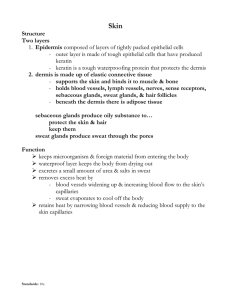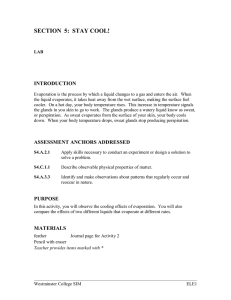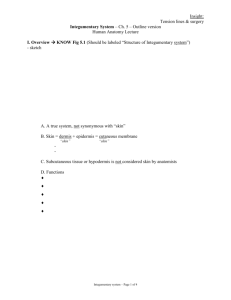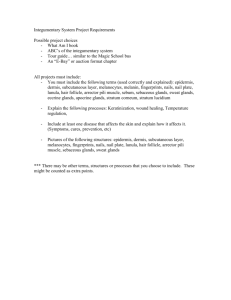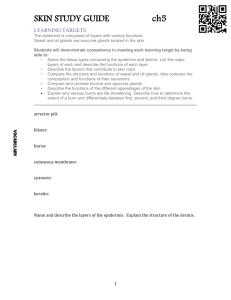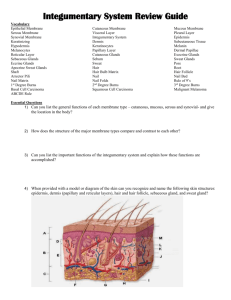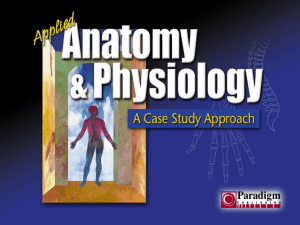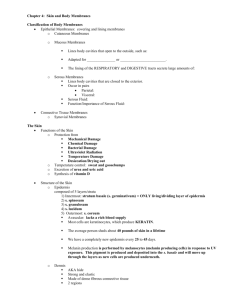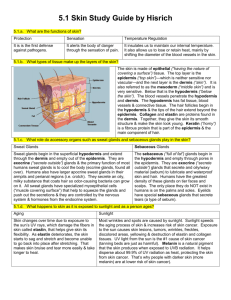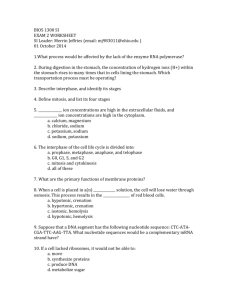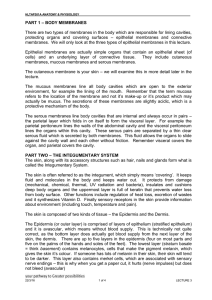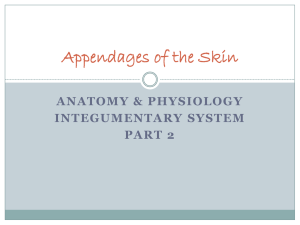AP 241 LECTURE UNIT OBJECTIVES Tissues & Integumentary
advertisement
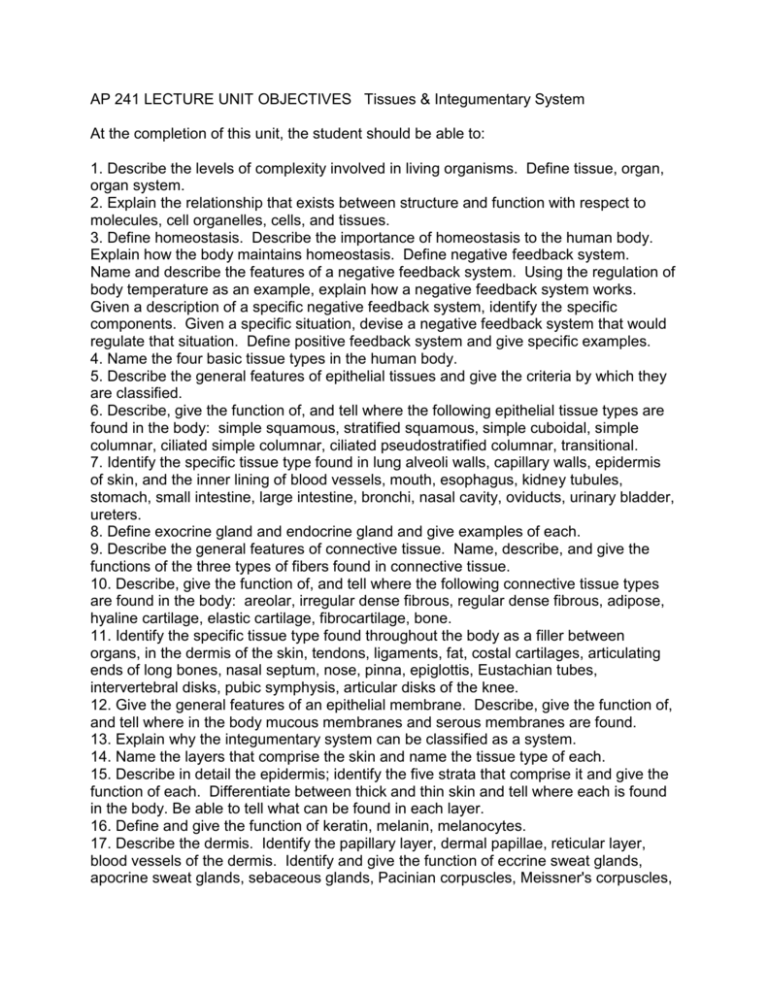
AP 241 LECTURE UNIT OBJECTIVES Tissues & Integumentary System At the completion of this unit, the student should be able to: 1. Describe the levels of complexity involved in living organisms. Define tissue, organ, organ system. 2. Explain the relationship that exists between structure and function with respect to molecules, cell organelles, cells, and tissues. 3. Define homeostasis. Describe the importance of homeostasis to the human body. Explain how the body maintains homeostasis. Define negative feedback system. Name and describe the features of a negative feedback system. Using the regulation of body temperature as an example, explain how a negative feedback system works. Given a description of a specific negative feedback system, identify the specific components. Given a specific situation, devise a negative feedback system that would regulate that situation. Define positive feedback system and give specific examples. 4. Name the four basic tissue types in the human body. 5. Describe the general features of epithelial tissues and give the criteria by which they are classified. 6. Describe, give the function of, and tell where the following epithelial tissue types are found in the body: simple squamous, stratified squamous, simple cuboidal, simple columnar, ciliated simple columnar, ciliated pseudostratified columnar, transitional. 7. Identify the specific tissue type found in lung alveoli walls, capillary walls, epidermis of skin, and the inner lining of blood vessels, mouth, esophagus, kidney tubules, stomach, small intestine, large intestine, bronchi, nasal cavity, oviducts, urinary bladder, ureters. 8. Define exocrine gland and endocrine gland and give examples of each. 9. Describe the general features of connective tissue. Name, describe, and give the functions of the three types of fibers found in connective tissue. 10. Describe, give the function of, and tell where the following connective tissue types are found in the body: areolar, irregular dense fibrous, regular dense fibrous, adipose, hyaline cartilage, elastic cartilage, fibrocartilage, bone. 11. Identify the specific tissue type found throughout the body as a filler between organs, in the dermis of the skin, tendons, ligaments, fat, costal cartilages, articulating ends of long bones, nasal septum, nose, pinna, epiglottis, Eustachian tubes, intervertebral disks, pubic symphysis, articular disks of the knee. 12. Give the general features of an epithelial membrane. Describe, give the function of, and tell where in the body mucous membranes and serous membranes are found. 13. Explain why the integumentary system can be classified as a system. 14. Name the layers that comprise the skin and name the tissue type of each. 15. Describe in detail the epidermis; identify the five strata that comprise it and give the function of each. Differentiate between thick and thin skin and tell where each is found in the body. Be able to tell what can be found in each layer. 16. Define and give the function of keratin, melanin, melanocytes. 17. Describe the dermis. Identify the papillary layer, dermal papillae, reticular layer, blood vessels of the dermis. Identify and give the function of eccrine sweat glands, apocrine sweat glands, sebaceous glands, Pacinian corpuscles, Meissner's corpuscles, free nerve endings, collagenous and elastic fibers. 18. Differentiate between merocrine, apocrine, and holocrine glands and give an example of each. Identify eccrine sweat glands, apocrine sweat glands, and sebaceous glands by gland type. 19. Tell where sebaceous glands and the two types of sweat glands are found throughout the body, when they begin to function, and to which stimuli they respond. Define sebum and give its function. 20. Describe the functions of the integumentary system. 21. Explain how the skin protects deeper tissues from invading microorganisms, ultraviolet radiation, abrasion, harmful chemicals, and water loss. 22. Describe the responses of the body to deviations from normal body temperature. Explain how these responses help return the body temperature to normal. 23. Explain the role of ultraviolet radiation in vitamin D production. Give the function of vitamin D. 24. Why are desmosomes so important in the epidermis? 25. How long does it take for a newly formed keratinocyte to migrate to the epidermal surface and be shed? Why is this process important? 26. Where is the subcutaneous layer (hypodermis)? What are the two types of tissue that can be there? 27. Be able to give the differences between core and surface temperature. 28. Know the mechanisms of how heat is exchanged with the environment and how they function. 29. Be able to explain how thermoregulation works in the body as a negative feedback loop. Be able to identify the control center, receptors and effectors and how they function to keep body temperature at homeostasis. 30. Know how infants regulate body temperature. 31. Give the different types of accessory structures associated with the skin. Know the different types of hair and their functions.

